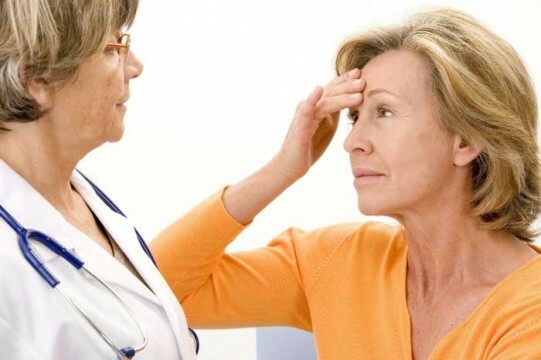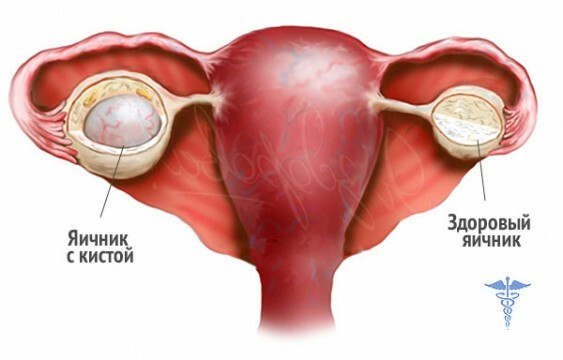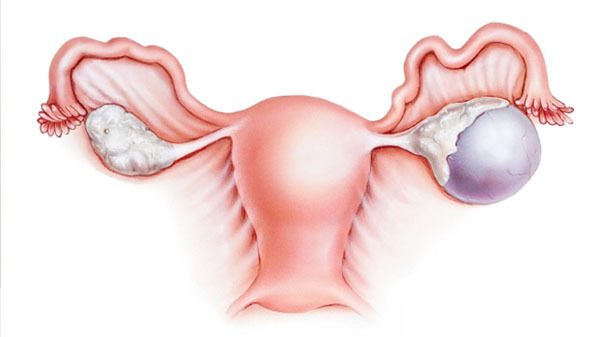Ovarian dysfunction is a pathological condition in which the ovaries of a woman are not able to perform their natural functions - to produce hormones and sex cells. Usually it occurs on the background of hormonal failures. The disease complicates the life of a woman, brings unpleasant feelings, mood swings, makes pregnancy impossible.
Symptoms of ovarian dysfunction

What is ovarian dysfunction? Pathology is determined by the following symptoms:
- violation of the natural menstrual cycle;
- absence of menstruation for 6 months or more;
- menstrual discharge is either very rare or abundant;
- unusual color and odor of secretions;
- burning and pain in the perineum;
- bleeding occurring between menstruation;
- termination of ovulation;
- pain in the lower abdomen;
- appearance of premenstrual syndrome, manifested as severe fatigue, apathy, irritability before the onset of monthly bleeding;
- inability to bear fruit, frequent miscarriages.
One symptom is enough to talk about the dangers of developing ovarian dysfunction.
But sometimes the obvious signs of the disease may indicate other problems with the reproductive system, which can lead to more severe conditions. Therefore, it is very important to immediately contact a specialist if you have complaints and start treating ovarian dysfunction in a timely manner.What causes ovarian dysfunction?
The main problem that occurs with the extinction of normal ovarian functions is the inability to conceive. In such a state, the female organism is unable to produce eggs, which makes fertilization impossible. If the problem was not detected in time, the disease goes to a chronic stage, so it needs to be treated on time.
Prolonged disregard for anxiety symptoms can lead to negative consequences of : development of mastopathy, endometriosis, uterine fibroids, ectopic pregnancy is possible. If in time to not take action, infertility develops, the risk of development of oncological diseases increases. Women after 40 years should be especially careful when signs of extinction of ovarian function appear.
Causes of the appearance of ovarian dysfunction
The causes of the disease are all those cases that can disrupt the hormonal balance and the menstrual cycle. Namely:
- venereal diseases;
- inflammatory processes affecting the pelvic organs or any other part of the body;
- disruption of the normal functioning of endocrine glands;
- of the endocrine system: obesity, diabetes, adrenal and thyroid disorders;
- head trauma, which resulted in damage to the pituitary gland - the producer of hormones responsible for monthly production of mature eggs by the ovaries;
- unprofessional installation of the intrauterine device;
- spontaneous or induced abortion;
- long-term stress, fatigue, lack of sleep, poor nutrition;
- change of climatic zone;
- taking certain medications.
Climacteric dysfunction of the ovaries

Ovarian dysfunction is divided into:
- juvenile, manifested at a young age;
- menopause, characteristic of more adult women.
The juvenile stage can and should be treated. As a rule, climacteric dysfunction of the ovaries is a natural fading of their normal activity. But sometimes it provokes hypertensive disease, a set of excess weight, obesity, diabetes, disorders of the central nervous system. This condition increases the risk of developing coronary heart disease, destruction of bone tissue.
About the extinction of ovarian functions in older women is indicated by menopause - the cessation of menstruation in the period from 6 months and more without obvious reasons. Usually this occurs at the age of 45 - 55 years, when the body is experiencing a decline in the production of estrogen. In this case, characteristic symptoms can occur:
- profuse sweating;
- restless sleep;
- frequent urge to urinate;
- dry skin and mucous membranes of the vagina;
- hot flashes caused by increased luteinizing hormone and decreased estrogen, accompanied by reddening of the skin.
- irritability and anxiety.
Age-related changes in ovarian function are irreversible. But to remove unpleasant symptoms can hormone replacement therapy .It is held once every five years. Both natural hormones and their synthetic analogs are used. However, there are contraindications, in which hormone replacement procedure is impossible. These are suspicions of the development of endometriosis of the uterine walls, varicose veins with a risk of thromboembolism, impaired blood clotting, liver disease, kidney, endocrine system, gallstones. Then resort to alternative methods - reception of bioidentical hormones, estrogen-receptor modulators, phytohormones. These substances are similar in structure to natural hormones, but have a less pronounced effect.
Diagnosis
Diagnosis of this disorder is the gynecologist-endocrinologist. He prescribes studies to identify the hormonal background:
- follicle-stimulating hormone( FSH);
- luteinizing( LH);
- progesterone;
- estrogen;
- Prolactin;
- adrenal hormones;
- thyroid hormones.
In addition, ultrasound of the pelvic organs, thyroid gland, adrenal glands, sowing from the vagina to the flora, microscopy, PCR analysis, histological examination of the endometrium of the uterine cavity will be prescribed. If necessary, conduct a study of the state of the brain. After all, sometimes the cause of hormonal disorder can be a pituitary lesion.
A set of necessary diagnostic tests is selected individually in each case, which determines the treatment of ovarian dysfunction. Therefore, it may differ from the listed list.
Treatment of ovarian dysfunction

In the presence of critical conditions( bleeding) treatment, first of all, is aimed at their elimination. And only then do the main causes of ovarian dysfunction become clear.
If it is an infection or an inflammatory process, then prescribe antibiotic therapy. The main treatment includes the normalization of the menstrual cycle , which is achieved after the intake of specially selected hormonal preparations. So progesterone therapy in the last third of the cycle is able to resume ovulation.
If necessary, the doctor prescribes the use of immunostimulants and vitamins, homeopathic medicines, nutritional supplements. Women are recommended to normalize the diet, increase the amount of time for sleep, and make physical activities in the daily routine. In some cases, psychological and psychotherapeutic help is prescribed.
Ovarian Dysfunction and Pregnancy
A woman with ovarian dysfunction automatically becomes at risk because of hormonal imbalance. This disease makes pregnancy difficult, or makes it impossible. Therefore, a course of procedures aimed at restoring the menstrual-ovulatory cycle is necessary. Specialist - endocrinologist prescribes individually selected hormonal preparations, which should be taken in the strictly established days of the cycle.
The degree and rate of maturation of the follicles in the ovaries is controlled by ultrasound. If the follicle reaches its optimal size, another hormone, human chorionic gonadotropin( hCG), is introduced that can cause ovulation. These manipulations are repeated for at least 3 cycles, by monitoring the ultrasound and rectal temperature measurements( ovulation onset).
The passage of the entire course normalizes menstruation, renews the maturation and release of the eggs, after which the woman is able to become pregnant. Especially important are the first weeks of gestation, since it is at this time that the risk of spontaneous miscarriage is high. But in later terms, you must treat with due attention to your condition and do not miss regular receptions from a specialist.
Prevention and precautions
Sometimes serious consequences can be avoided by observing simple measures, namely:
- Avoid overcooling. Especially it concerns the pelvic organs, lowering the temperature of this area can provoke inflammation of the ovaries, appendages and the uterus itself.
- Observe the basic hygiene of the genitals. This simple measure will prevent infection through the urogenital pathway to other important organs - the bladder, uterus, epididymis, ovaries.
- Do not let nervous overexertion, exhaustion. Rationalize the mode of work and rest.
- Do not self-medicate, do not take medications that you do not know.
Preventive measures that eliminate the possibility of bleeding after the course of treatment, appoints the attending physician. Usually this is progesterone therapy during the 16 to 26 day of the monthly cycle. If the course is passed, it provokes a seven-day menstruation, after which a combination of other hormonal drugs is prescribed.



